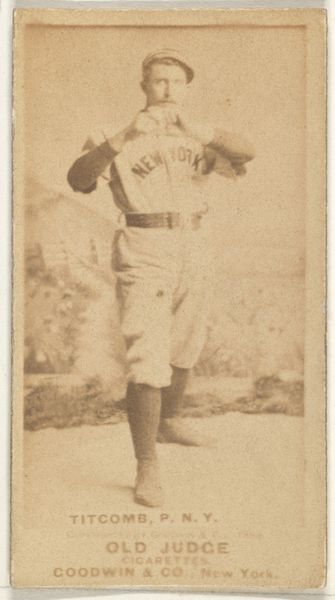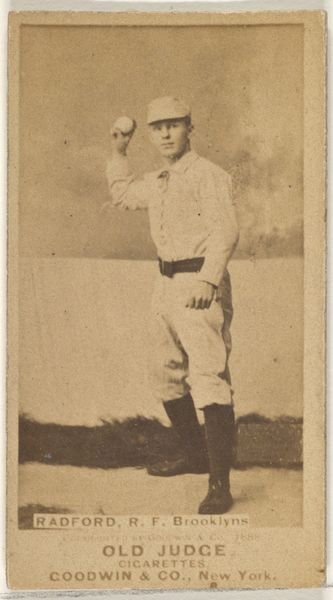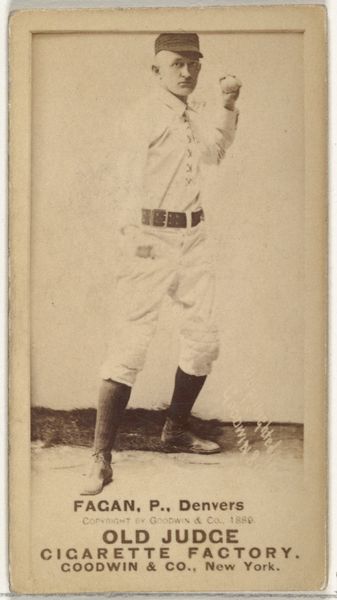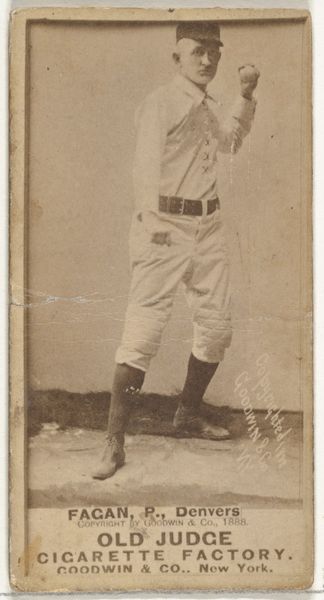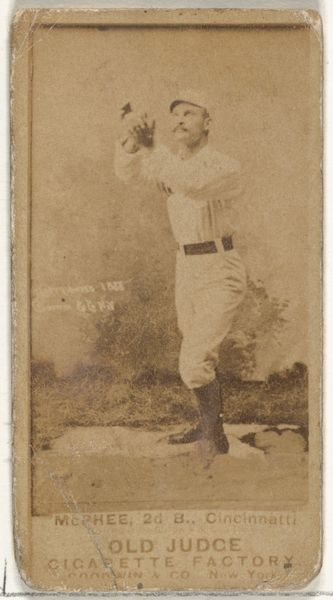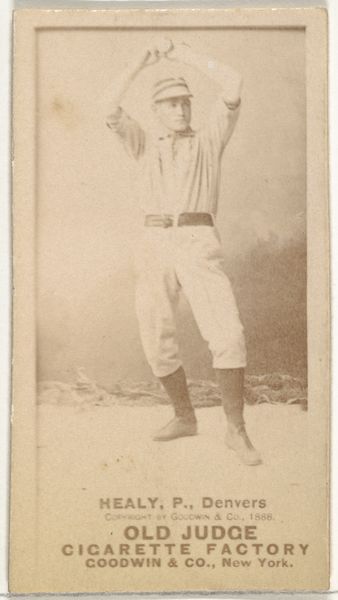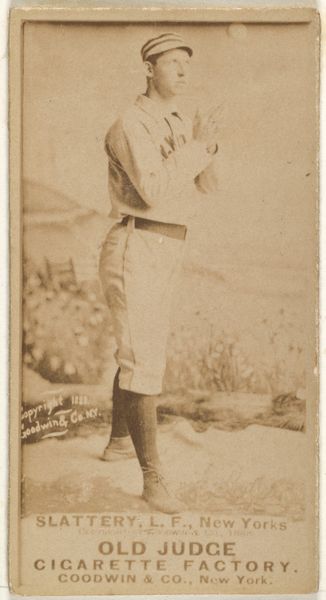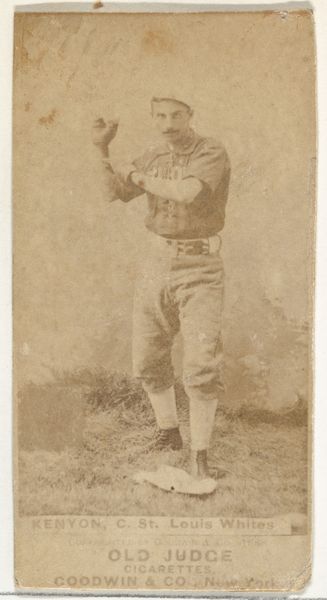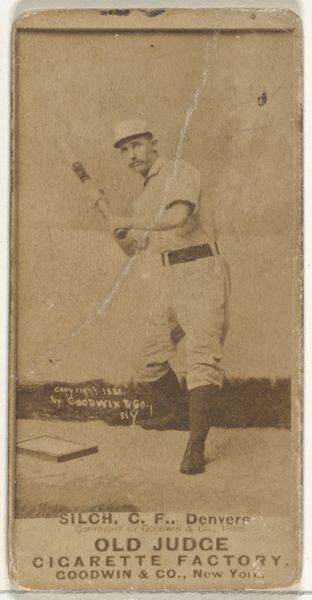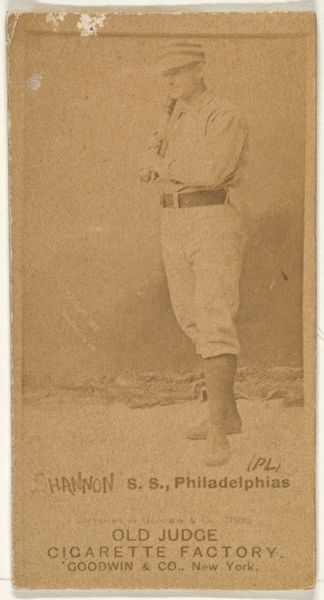
Ledell "Cannonball" Titcomb, Pitcher, New York, from the Old Judge series (N172) for Old Judge Cigarettes 1888
0:00
0:00
drawing, print, photography
#
portrait
#
drawing
# print
#
figuration
#
photography
#
men
Dimensions: sheet: 2 11/16 x 1 3/8 in. (6.9 x 3.5 cm)
Copyright: Public Domain
Curator: Here we have "Ledell 'Cannonball' Titcomb, Pitcher, New York," a print from the Old Judge series, dating back to 1888. It was created by Goodwin & Company as a promotional card for Old Judge Cigarettes. Editor: The sepia tone lends a nostalgic aura. He stands there, mitts up, exuding a grounded confidence. There is an overall sense of expectant quiet. Curator: As an iconographer, what symbols are immediately jumping out at you? Editor: Definitely, his New York jersey is charged with cultural meaning. It is more than just sportswear, it connects him with notions of metropolitan hustle, immigrant experience, early sporting culture... Curator: Exactly! The figure of the baseball player during this time was a fascinating one. As professional baseball grew, it represented both working-class masculinity and an aspirational social mobility—though the realities were, of course, often much more complex. These cards became objects of collection and desire, reflecting broader societal values tied to success. Editor: There's a duality, too. Baseball has always held strong links with ritual, acting almost as a kind of surrogate mythology. Curator: Goodwin & Co. capitalized on that cultural cachet. They understood that linking the image of Titcomb to their cigarettes would associate their product with those qualities. Who he *represented* was almost more powerful than who he *was.* This creates, or enhances, an ideal. Editor: The repetitive presence of similar images in cigarette packs would likely have played an important part in weaving baseball into the American visual vocabulary. You could buy into the dream bit by bit, pack by pack. Curator: And while we might now analyze this image through a critical lens, understanding the intertwined threads of commerce, identity, and leisure is key. It tells us something about what mattered, and who mattered, at the time. Editor: It's intriguing how such a seemingly simple image acts as a visual bridge to connect to that era's collective longings. Curator: Indeed. The more we ask, the more it reveals.
Comments
No comments
Be the first to comment and join the conversation on the ultimate creative platform.
